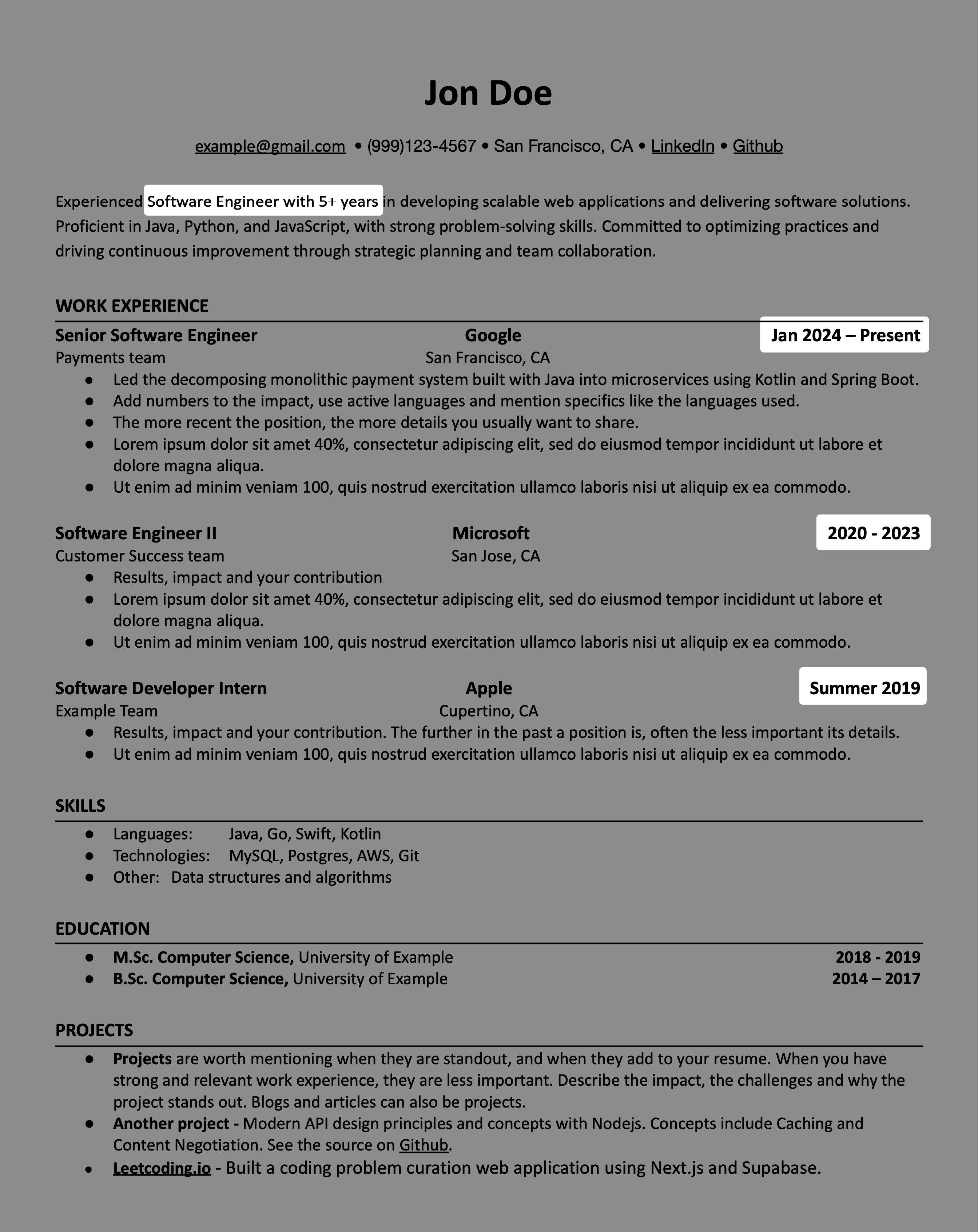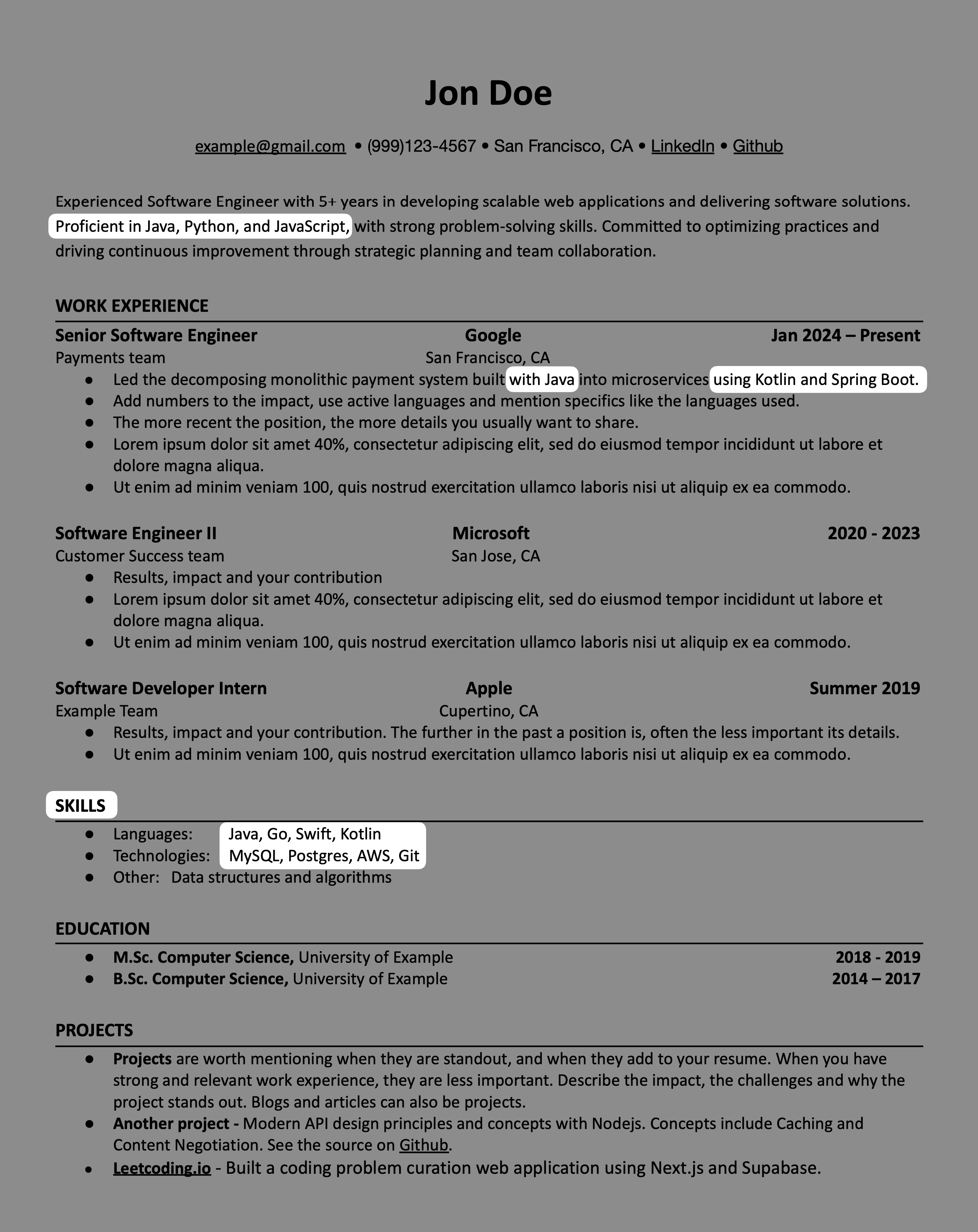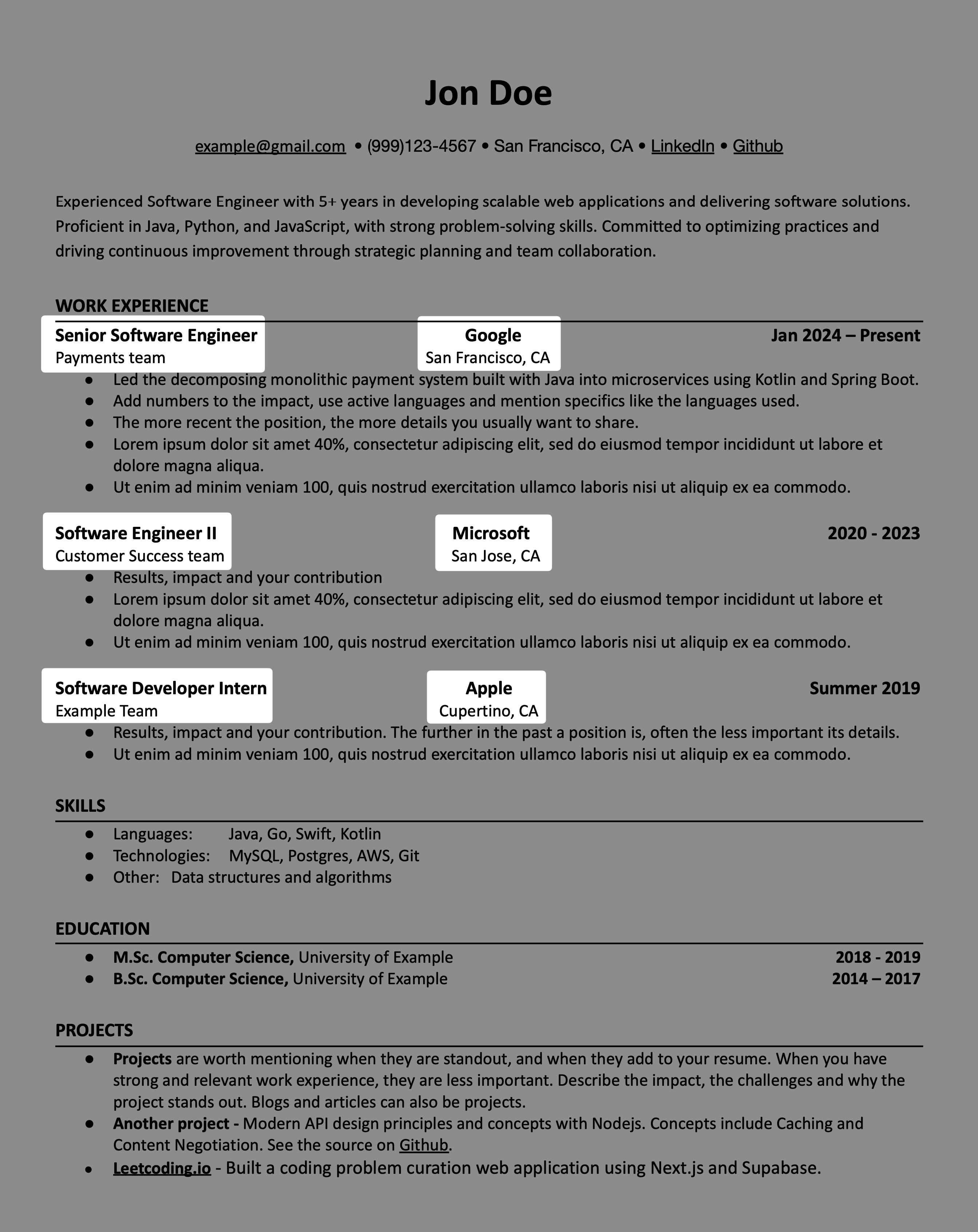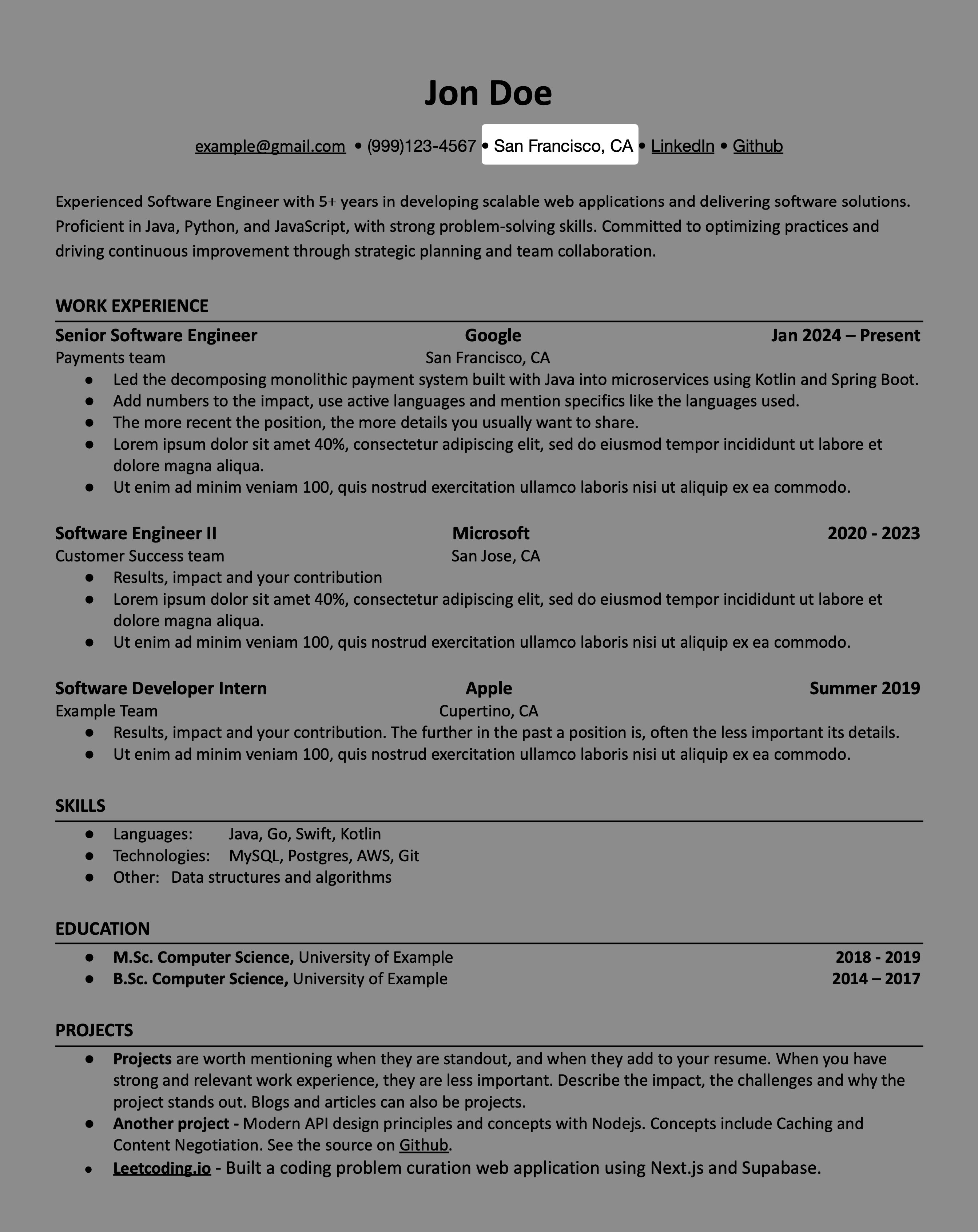💯 How Resumes are Actually Reviewed
👀 What Reviewers Look For in 7 Seconds
Resume reviewers have to evaluate a large number of resumes quickly, so they don’t read each one thoroughly to find the perfect candidate. In fact, studies show that resumes are typically reviewed in just 7.4 seconds.
During this quick review, here’s what reviewers typically look for first:
- Years of experience
- Technical skills
- Company and job titles
- Current location
While these aren’t necessarily the most important details, they are the easiest to spot quickly. Ultimately, reviewers are trying to assess three main points:
- Does the candidate meet the hiring manager’s requirements?
- Can the candidate actually do the job?
- Is the candidate worth inviting to an interview? (i.e., do they have a good chance of getting hired?)
The most impactful information usually comes from the 💼 Work Experience section, but reading through it all would take too long. That’s why reviewers scan for the above information first to quickly filter out resumes that don’t make the cut. (Click each tabs ⬇️)
However, the entire evaluation doesn’t end in just 7.4 seconds. Think about it—no recruiter would spend only 7.4 seconds on a resume before scheduling a 15-minute or longer recruiter call.
Resumes are initially sorted in just 7.4 seconds into those worth a closer look and those that aren’t. Most recruiters and hiring managers use a simple system for this: the Yes/Maybe/No System.
🚥 Yes / Maybe / No System
The Yes/Maybe/No system involves quickly scanning resumes (in about 7.4 seconds) and sorting them into three piles: Yes, Maybe, and No. This helps find suitable candidates faster.
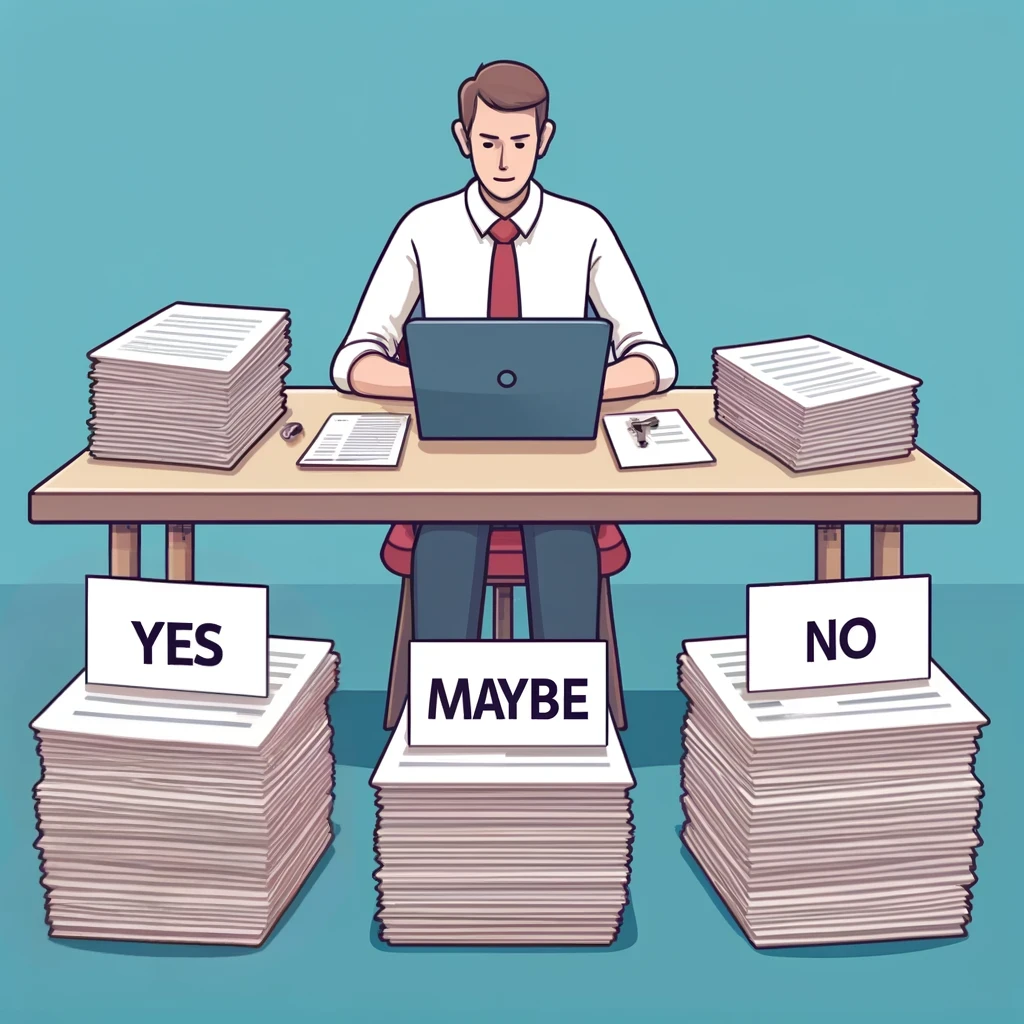
❌ “No” Pile
Most resumes end up in the No pile, and once there, they are not reviewed further. It’s more efficient to find reasons to discard resumes than to search for perfect ones, so resumes are first screened against the 8 common reasons for rejection.
Even if a good candidate’s resume ends up in the No pile by mistake, reviewers are okay with that risk because they have so many resumes to get through quickly.
🟨 “Maybe” Pile
Candidates who don’t quite make it to the Yes pile but aren’t immediate rejects end up in the Maybe pile.
Candidates in the Maybe pile are only considered if there aren’t enough options in the Yes pile. Usually, if there are five or more candidates in the Yes pile, those in the Maybe pile are not reviewed further.
✅ “Yes” Pile
The Yes pile usually holds fewer than five candidates, depending on the hiring needs. Those in this pile move on to the next stage.
Some companies manage the Yes pile in batches. For instance, they might select five candidates from the Yes pile every Monday to proceed in the process. Since applications come in continuously, many companies adopt this batch approach.
Why applying early gives you an advantage?
It’s best to get your resume into the earlier batches. If your resume ends up in a later batch, you could miss out on an opportunity even if you’re highly qualified because final candidates may already be chosen from earlier batches.
- If you performed well in interviews but still got rejected, it might be because final candidates were selected from an earlier batch.
- On the other hand, if you’ve had a final interview and haven’t heard back in a while, it could mean the company is still evaluating candidates from multiple batches before making a decision.
Typical batch intervals are about a week, and most companies give final interview results within three weeks. Therefore, applying as soon as a job is posted increases your chances of landing in one of the first three batches, which can be highly advantageous.
